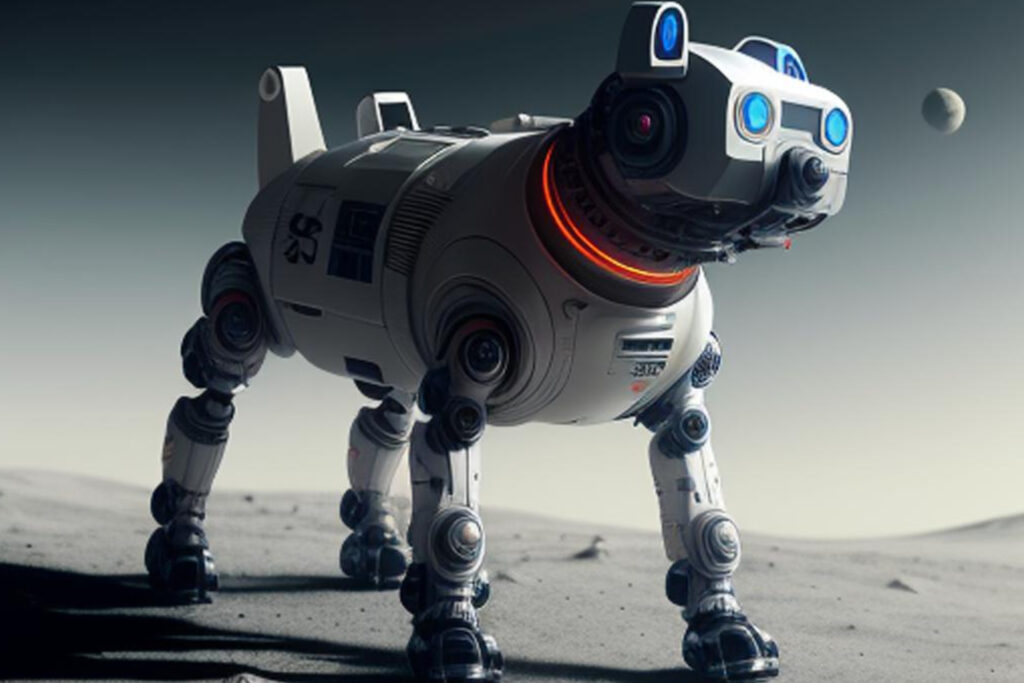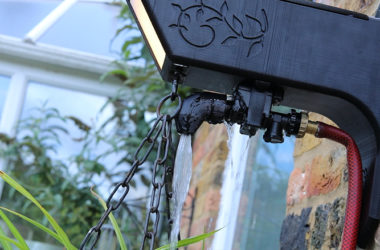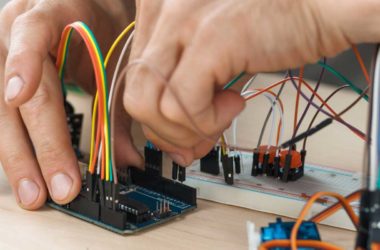NASA, European Space Agency and investors are pouring billions into creating robotics and AI applications suitable for zero-gravity conditions. This inspiring new technology has the potential to aid missions, facilitate exploration and maybe even make it possible for us to relocate to other planets one day.
From Robby in Forbidden Planet to Star Wars icons R2-D2 and C-3PO, we’ve been imagining robots in space for decades. However, today they’re no longer confined to the big screen – they’re fast becoming a reality.
“I think sometime we will go to Mars and I think we’ll explore it with humans sometime, but I think it’s really wise to do all the robotic exploration ahead of time and learn as much as possible. Once we have learned as much as possible with the robots, then that’s the time to send people, and let them then continue the research that the robots have started.
– John Glenn, an American Marine Corps aviator, engineer, astronaut, businessman, and politician. He was the third American in space, and the first American to orbit the Earth.
Autonomous space probes
Forget just the Moon—prepare to explore far beyond! Thanks to cutting-edge autonomous robots, the possibilities for venturing into uncharted realms of our Solar System are boundless.
While Venus and Saturn may not be the most suitable places for humans, the idea of emigrating from Earth still burns bright. To know if people would ever be able to change the planet, it has to be checked and prepared before humans can populate it. This is where space probes come to the spotlight.
A space probe is an unmanned device designed to explore space and acquire valuable scientific data. Equipped with a set of scientific instruments and tools, it is launched from Earth to study the atmosphere and composition of planets, moons, and other celestial bodies. Probes can operate in deep space, orbit around planets or moons, or even land on their surfaces. Some probes conduct one-way missions, while others return to Earth, bringing back samples and data. Typically, these probes transmit their findings back to Earth using radio communications.
Since November 2018 a robot named InSight has been exploring Mars, detecting more than 1,300 earthquakes, some caused by molten rock movement. Additionally, it found tremors caused by meteoroid impact and revealed water ice nearer the equator. During the secondary part of the mission, InSight looked into the planet’s internal structure, including crust, mantle, and core thickness. It provided detailed weather data collected for a full Mars year (687 days), informing various atmospheric studies. And like Ajay B. Limaye, an assistant professor at the University of Virginia, said in an interview with the university’s news website, ‘there had never been this amount of data from the ground on Mars’.
A floating space robotic assistant
CIMON (Crew Interactive Mobile CompanioN) is an autonomous floating robotic head assistant.The bot was developed by Airbus on behalf of the German Aerospace Centre and runs a version of IBM Watson’s artificial intelligence. As well as a video-screen face, CIMON has a camera to see his surroundings, plus a digital voice to enable him to answer questions and interact with astronauts as they perform tasks.
The first photo of CIMON in space was taken after two years of working aboard the International Space Station. CIMON is the first artificially intelligent assistant aboard the orbiting laboratory. The idea behind it is to be a hands-free database, computer and camera to support the research.
The development of space assistants doesn’t stop. Airbus has already developed an updated version of CIMON – CIMON-2, that in 2020 made its successful debut on the International Space Station. Furthermore, NASA is also working on developing a ChatGPT-like assistant for astronauts. The goal for initiators is to eventually have ‘conversational interactions’ with space vehicles. Thus the popularity of OpenAI takes over not only the ground but also space.
Robot dogs on the moon

Before considering human habitation on the moon, extensive scientific research must be conducted. In support of this attempt, scientists and students have deployed advanced robot dog explorers which might be on the moon in the future. With the ability to climb steep slopes, leap, dig and explore elevated terrain, they could one day help humans explore the moon and other planets.
Already, a robotic dog-shaped explorer called GLIMPSE, designed by ETH Zurich and the University of Zurich, has passed its first tests in 2022, along with other robot explorers. GLIMPSE’s role is to find out more about the south polar region of the moon.
Another robot dog concept is the LEAP (Legged Exploration of the Aristarchus Plateau) designed to run on the surface of ESA’s European Large Logistics Lander (EL3). Its design was influenced by the ANYmal legged robot created by the ETH Zurich and its offshoot ANYbotics.
“With the robot, we can investigate key features to study the geologic history and evolution of the moon, like the ejecta around craters, fresh impact sites, and collapsed lava tubes, where material may not have been altered by space weathering and other processes,”
– Patrick Bambach, an engineer at the Max Planck Institute for Solar System Research in Germany.
Send for the satellite mechanic
Space is filled with thousands of satellites that not only predict the weather but also explore planets and galaxies to help us better understand the universe.
But what if something starts to go wrong? It’s not like we have mechanics in space. Well, actually, we do. Maybe not real mechanics but repair equipment.
According to Orbital Today, there were more than 5,000 satellites operating in orbit in mid-2022. The satellites’ average lifespan is 5 to 15 years. Thus some of them might break down whereas others require maintenance.
Until the mid-80s broken satellites could not be repaired, but everything changed with NASA’s Solar Maximum Mission where a satellite was dragged into the cargo hold of the shuttle and repaired in 1984 by the crew of the Space Shuttle Challenger. Since then, there were a few other missions that involved rescuing and repairing satellites in orbit. For instance, in 2020 there was a MEV-1 mission that aimed to extend the life of a satellite (Intelsat 901 or IS-901) in geostationary orbit by providing servicing and propulsion capabilities to the satellite.
There are other upcoming missions that will refuel and repair satellites in orbit. For instance, the OSAM-1 (On-orbit Servicing Assembly, Manufacturing-1) mission is scheduled to launch in 2024; and its purpose will be to do the first-ever in-space inspection, refurbishment and refuelling of an ageing U.S. government satellite.
The astronaut assistant
Meet R5, aka Valkyrie, a 1.8m tall, 136kg humanoid robot. Designed to help astronauts perform a wide range of tasks in space, it is powered entirely by battery and equipped with multiple actuators enabling 44 degrees of freedom, gripper hands to carry out tasks, and sensors and cameras in its head and chest.
Originally built by the Johnson Space Centre (JSC) for the 2013 DARPA Robotics Challenge, Valkyrie later became part of Nasa’s Space Robotics Challenge. Since then, Northeastern University, Massachusetts Institute of Technology (MIT) in the US and the University of Edinburgh in Scotland, have all been working on the software needed to make it space-mission ready.
Valkyrie embarks on an exciting new mission far from home (but still on Earth), in Australia. Its purpose is to elevate robotic remote operations capabilities, enhancing efficiency and safety for Woodside’s offshore endeavours while safeguarding personnel and the environment. Currently undergoing tests at Australian Woodside Energy in Perth, Valkyrie demonstrates its versatility to perform vital tasks both in space and on Earth.
“We are pleased to be starting the next phase of development and testing of advanced robotic systems that have the potential to positively impact life on Earth by allowing safer operations in hazardous environments.”
– Shaun Azimi, lead of the dexterous robotics team at NASA Johnson
Although it is a ground-based robot, Valkyrie or its improved version might one day be sent into space.
These applications of robots in space are only the tip of the intergalactic iceberg. From microgravity robots specifically designed to operate in zero-gravity environments to planetary robots like Mars rovers, that have made groundbreaking discoveries, including the evidence of recent water on Mars. There are also many other designs and prototypes in progress.
By enabling us to perform tasks far beyond our human capabilities, these smart technologies are advancing the frontiers of space exploration in exciting new ways.











